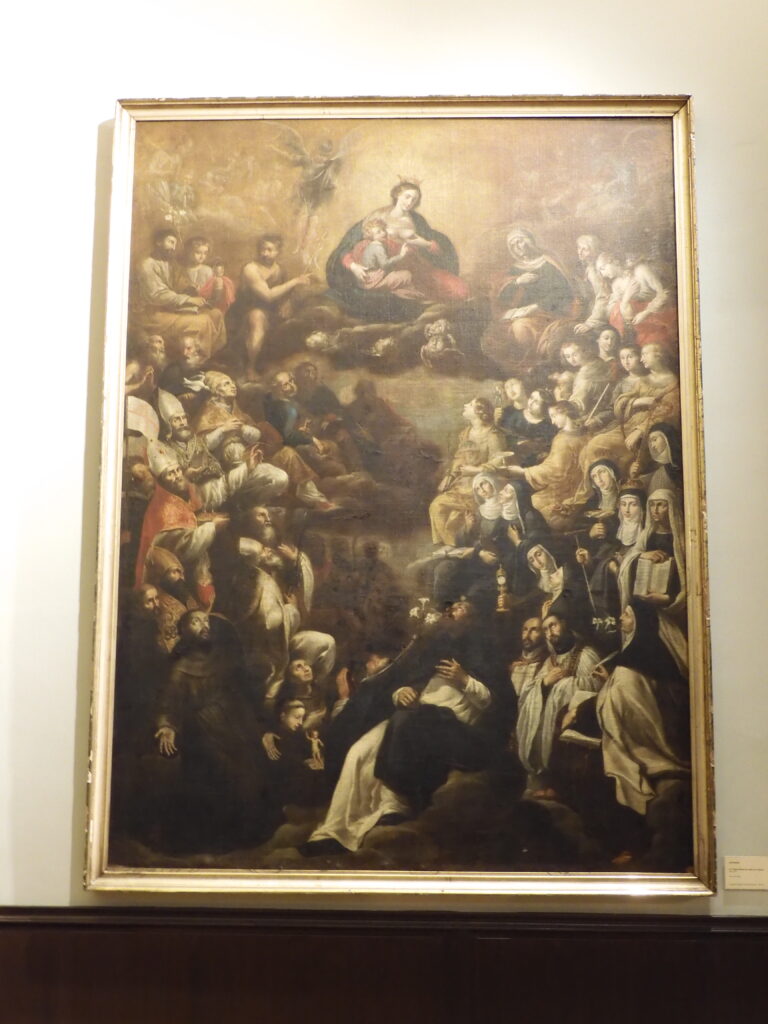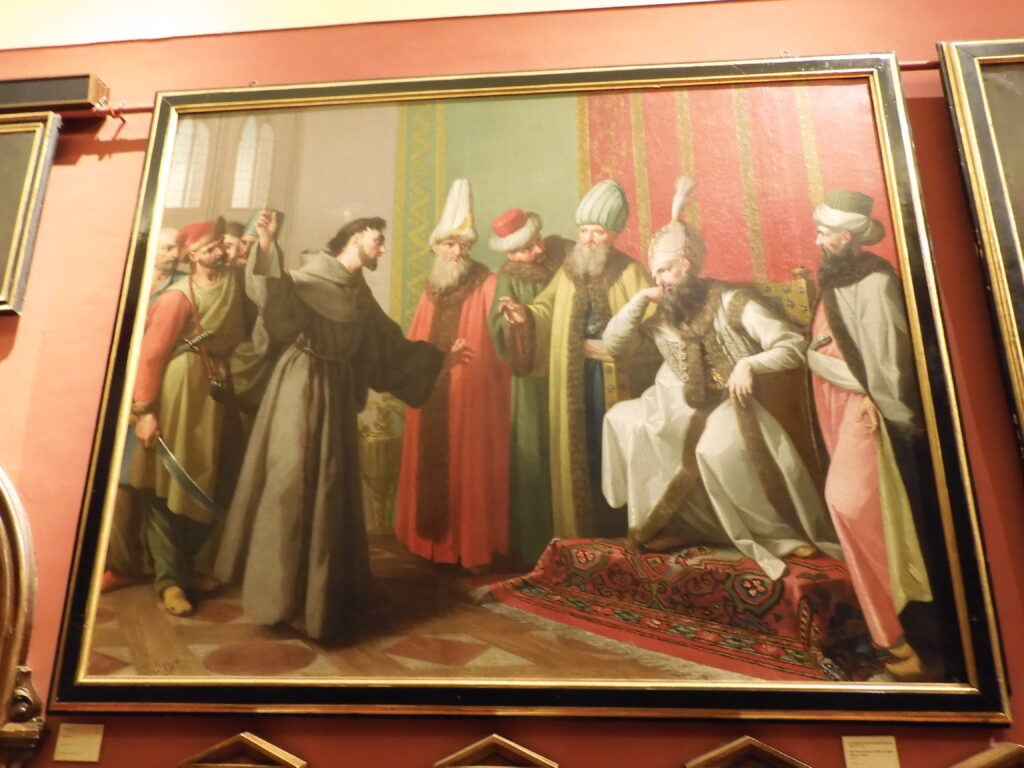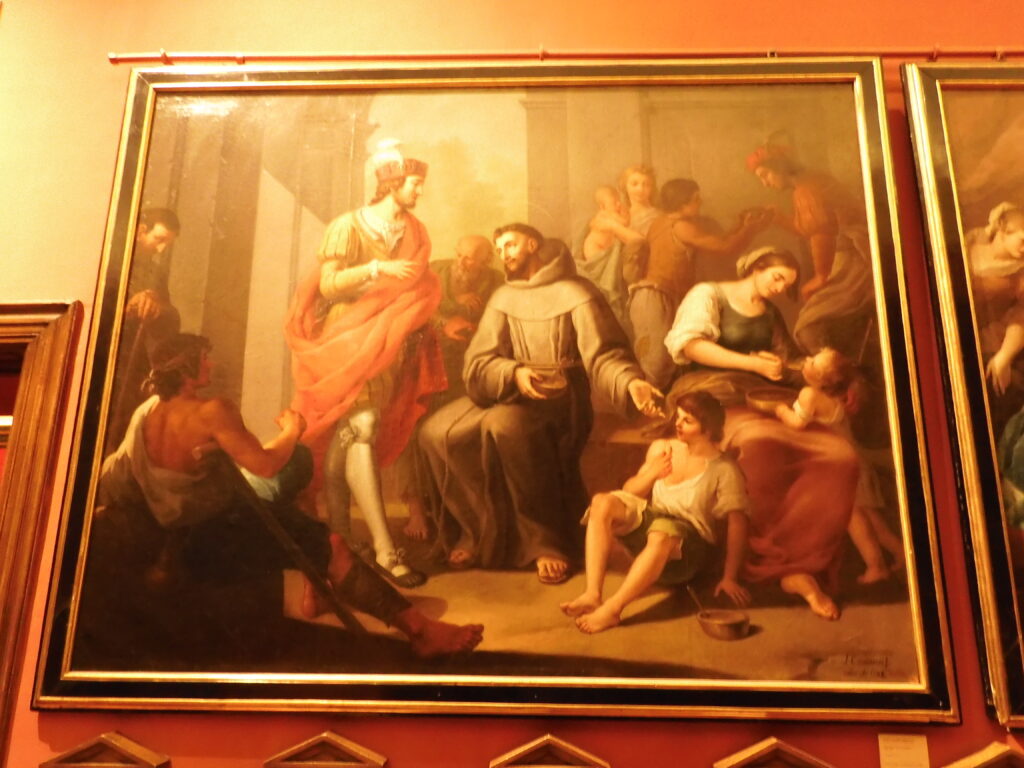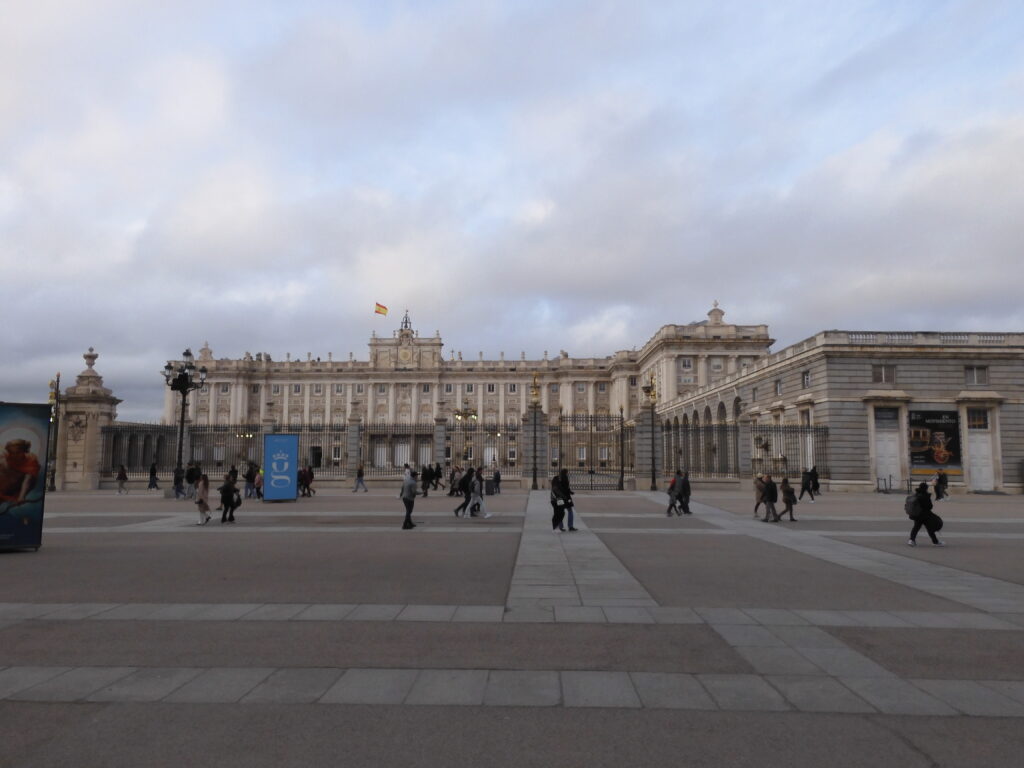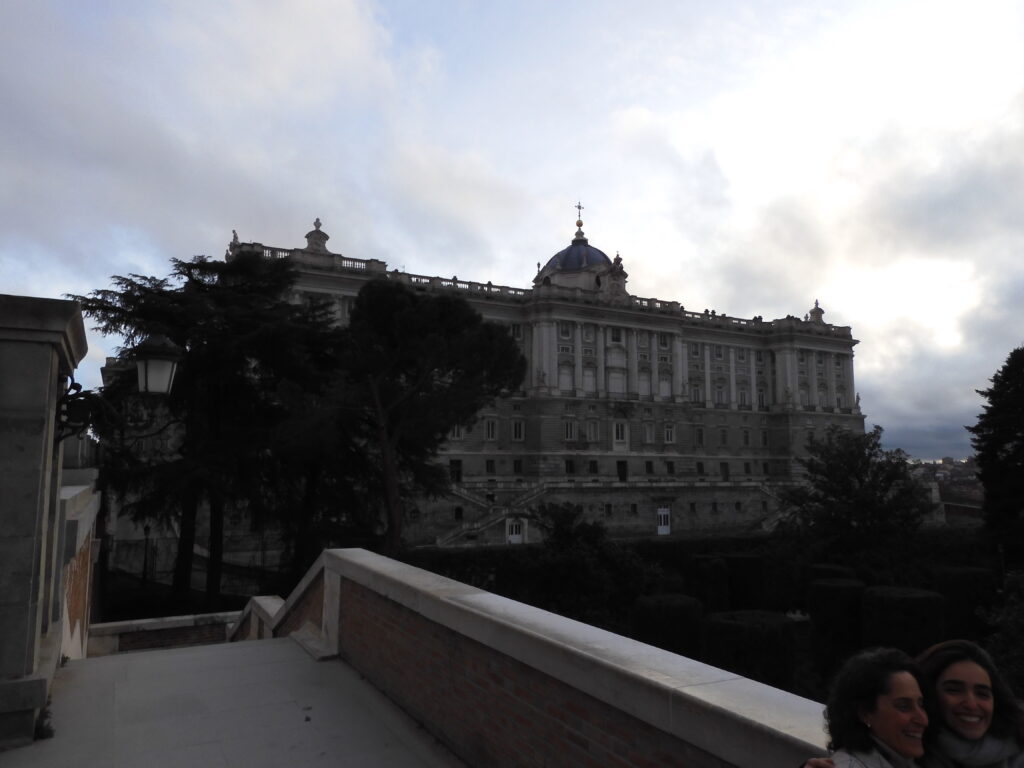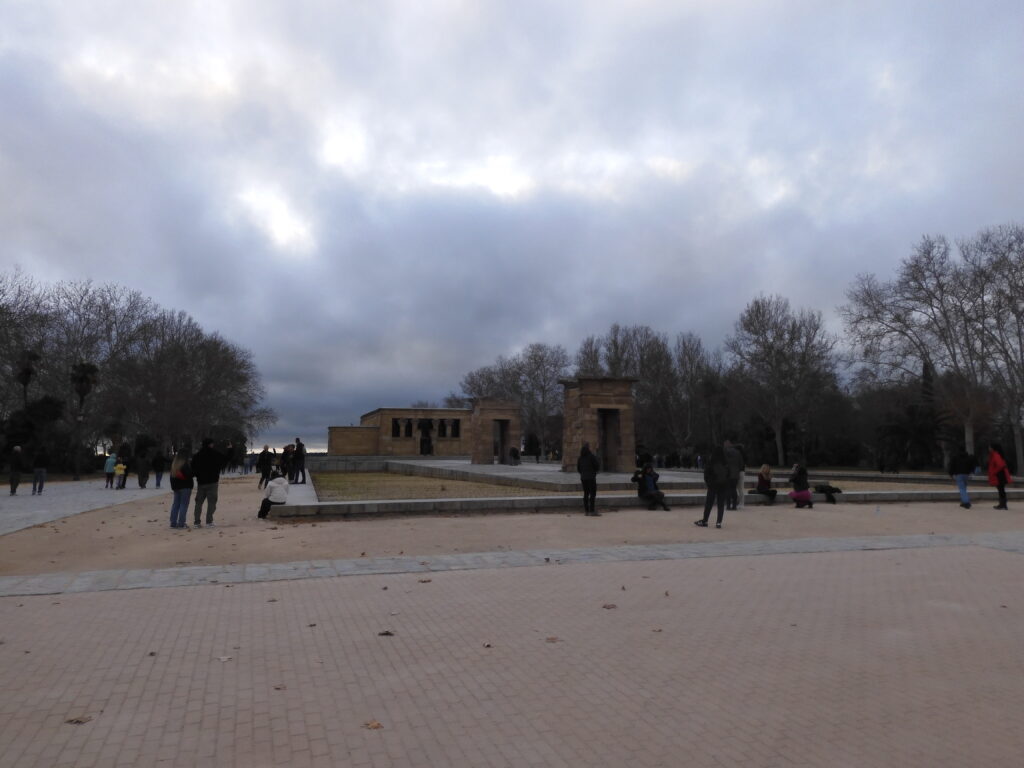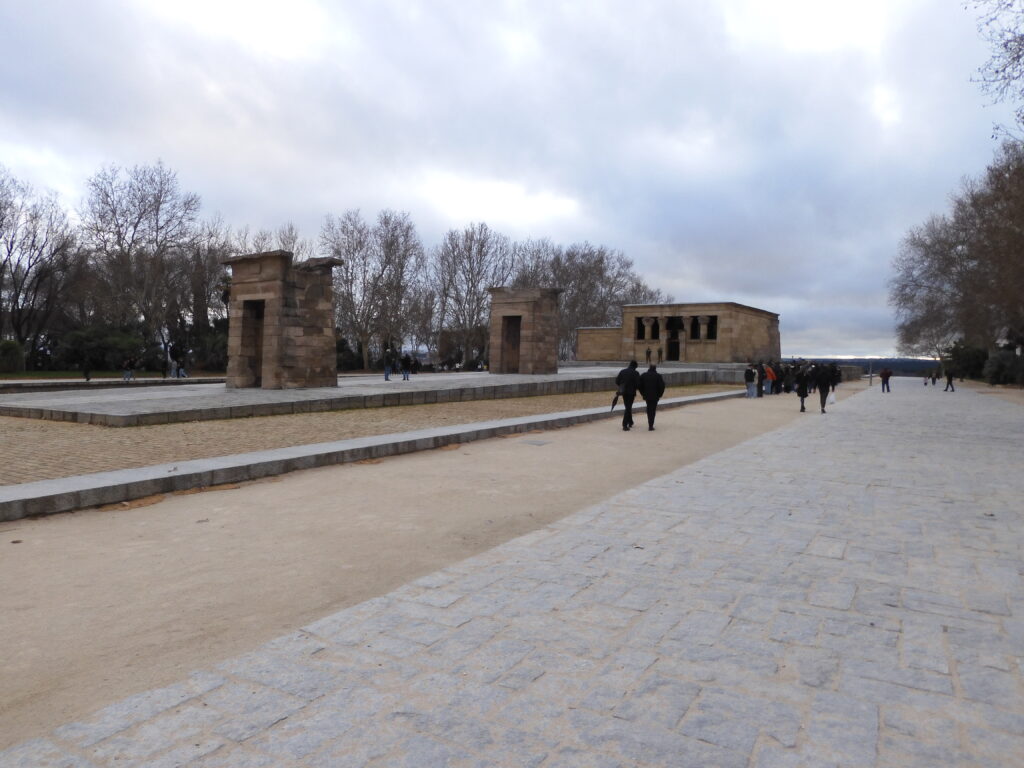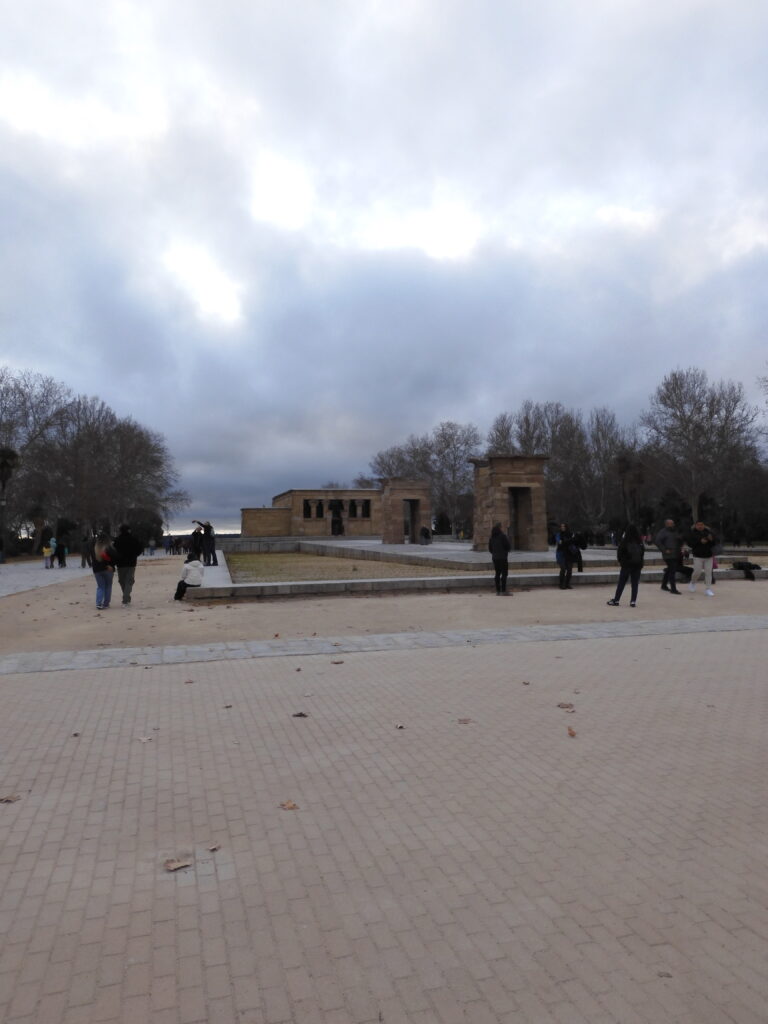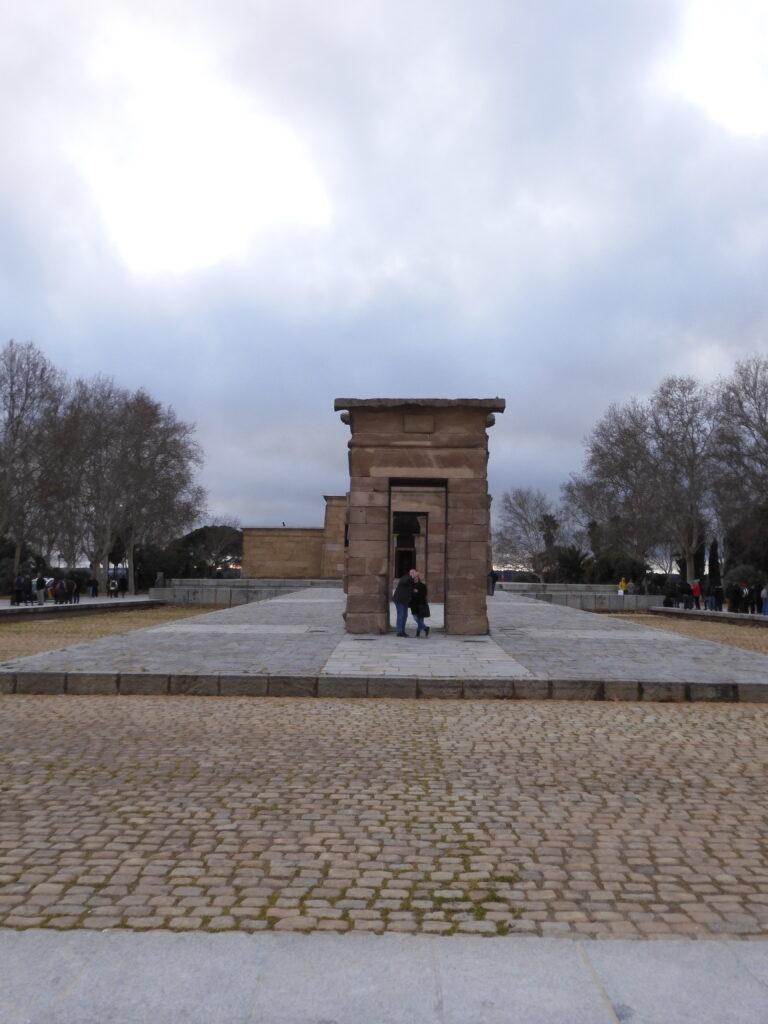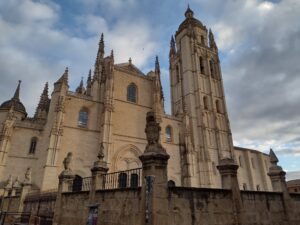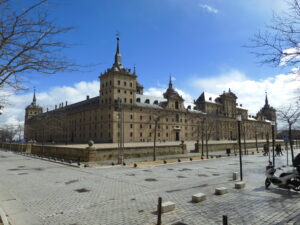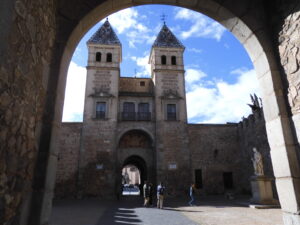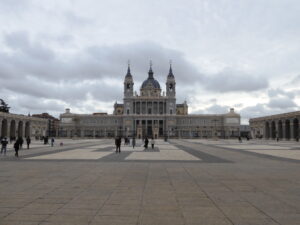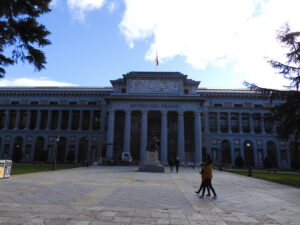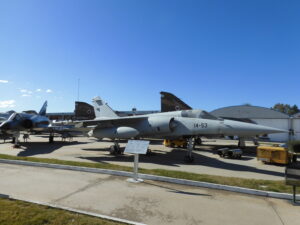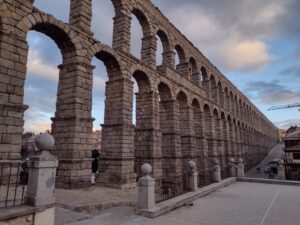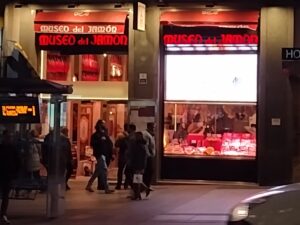Madrid
A City of Baroque Buildings
The flight from Dallas to Madrid was an all-nighter; I arrived in Spain early Thursday morning. Travelers arriving early to a city usually have a built in place to store their baggage. If you plan to stay at a motel or even a hostel, they will likely store your bags for either a small fee or just a tip. If you rent a car, the car is your built-in storage. I had booked a VRBO and did not rent a car. I was not slated to check into my room until after three. I managed to find a coin-op locker arrangement in downtown Madrid where I could store some bags. The price seemed exorbitant, but I used it anyway for lack of better options.
Thus free from the heaviest of my encumbrances, I began to walk around the downtown areas of Madrid, to see what I could until 3:00. I learned how to purchase a pass and navigate the metro. I found the Plaza del Sol and Plaza Mayor. I found something to eat. As I walked around downtown Madrid, I was impressed by the baroque architecture. At first, every building felt like a work of art. After a while, I got baroque overload and it just became the normal Madrid scenery. My Madrid neighborhood was Barrio de las Letras, so named for hosting previous domiciles of author Miguel de Cervantes and playwright Felix Lope de Vega. I passed multitudes of pretty little squares containing storefronts and restaurants with covered outdoor dining areas – even in February. February in Madrid can be surprisingly cold. It was most days I was there, and there was always a brisk wind, especially outside the city. I sought out two major squares specifically. Plaza del Sol is home to Madrid’s main metro hub. Plaza Mayor is simply the largest of the downtown squares.
(Continued)

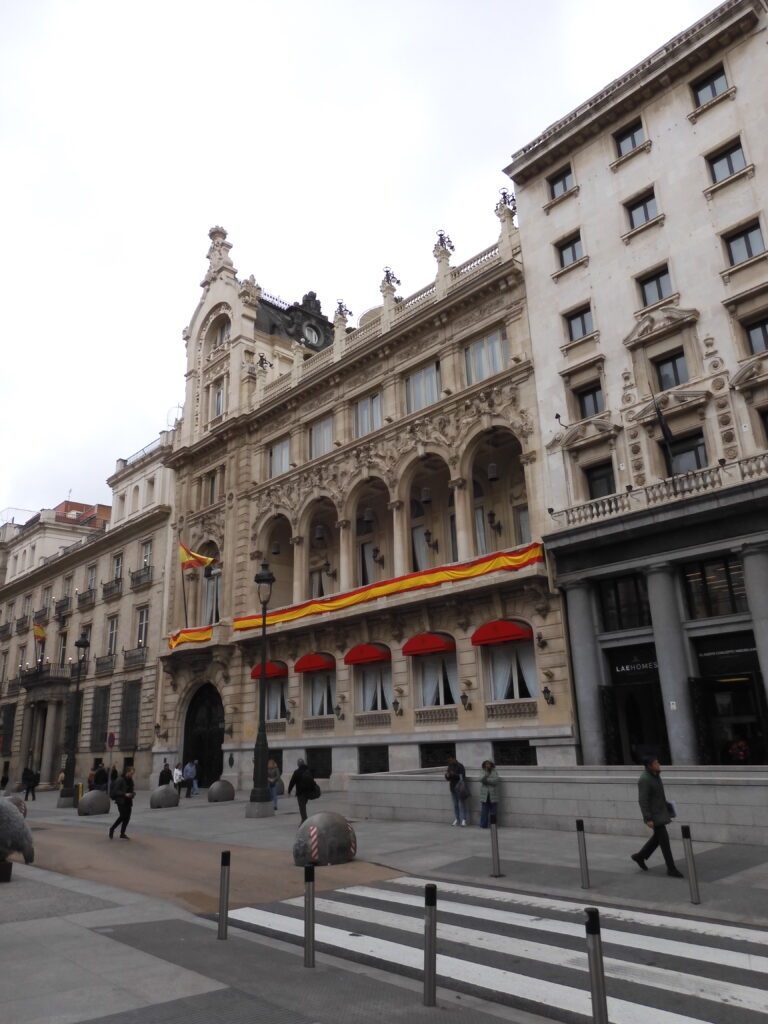
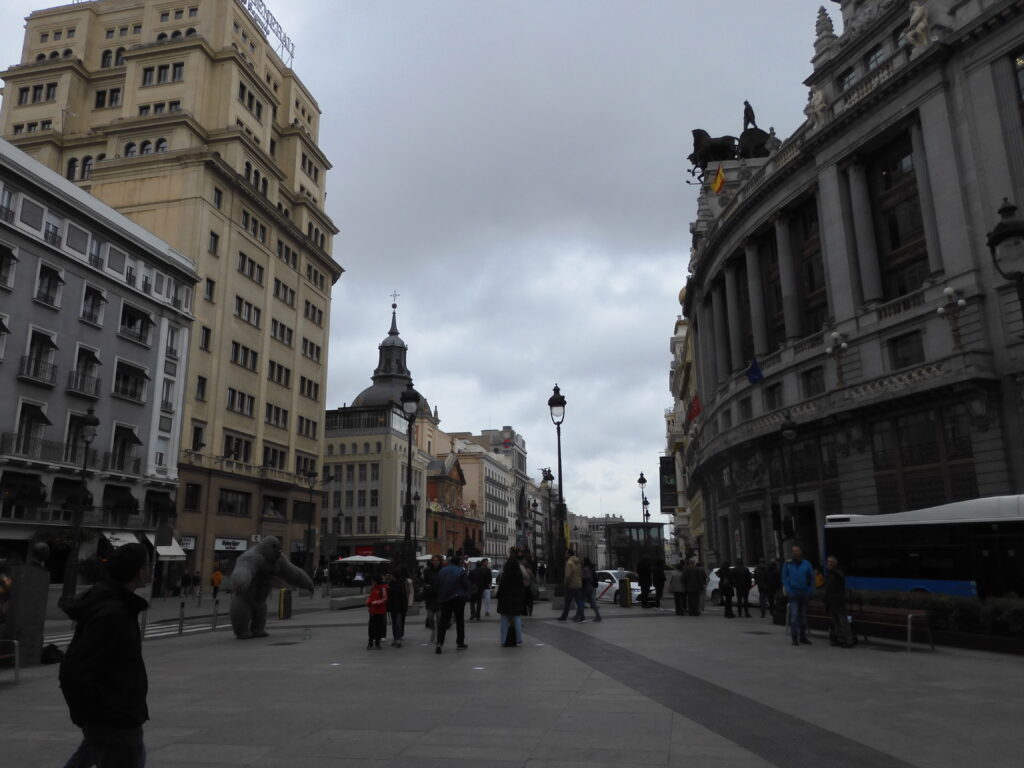
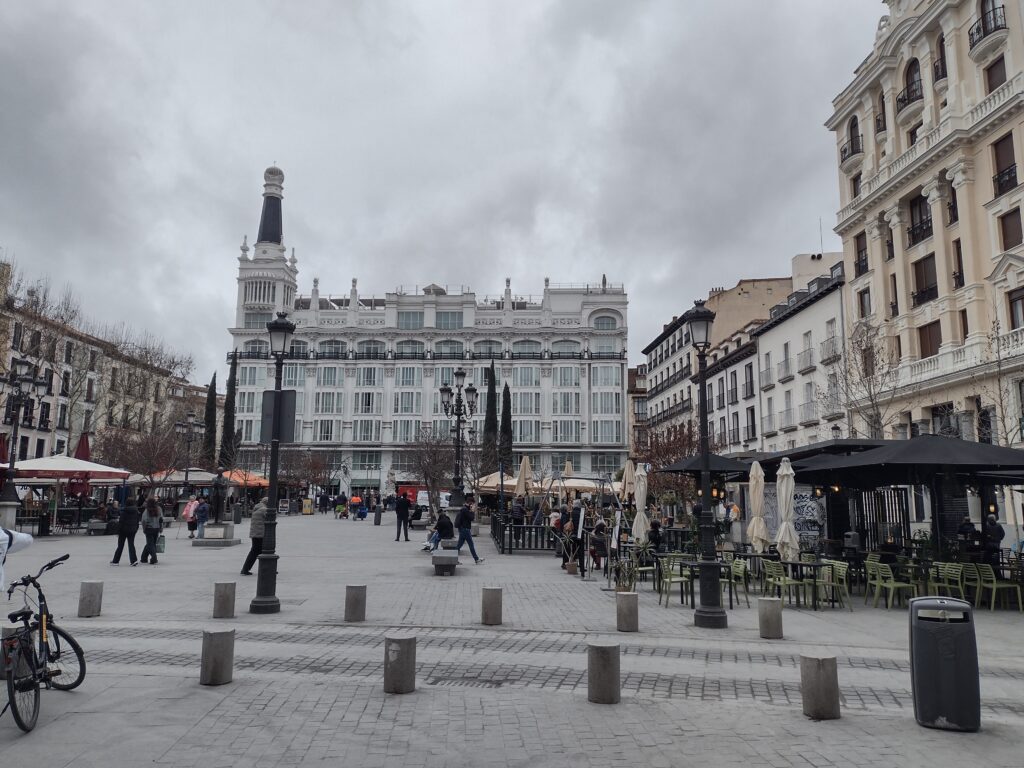
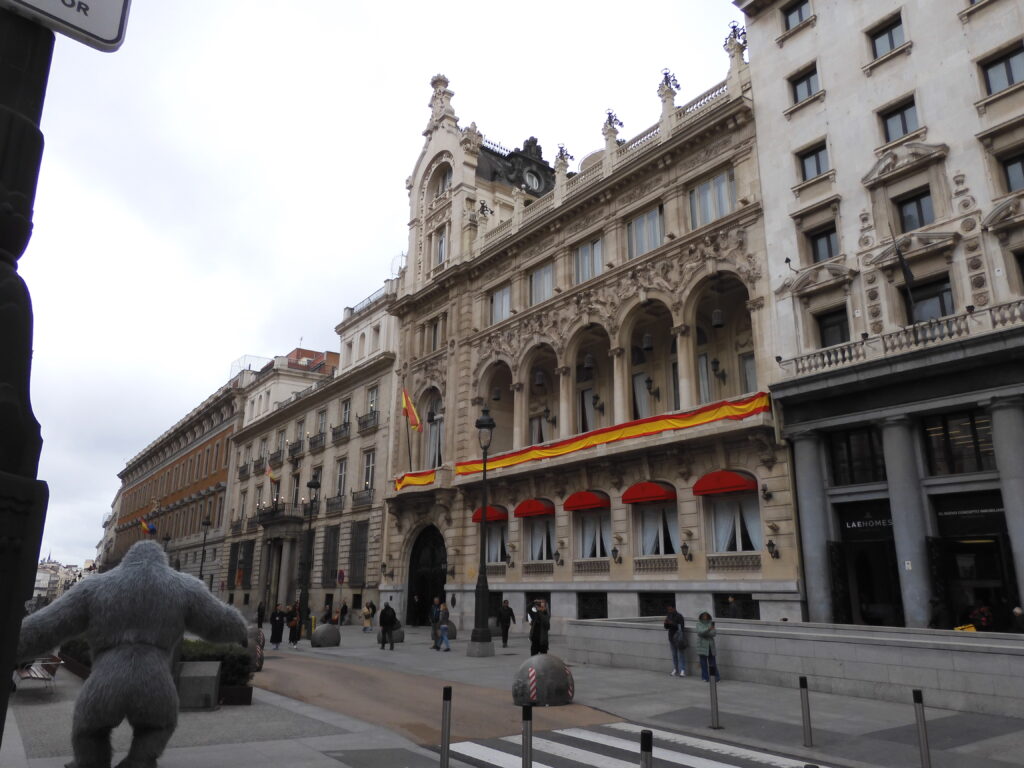
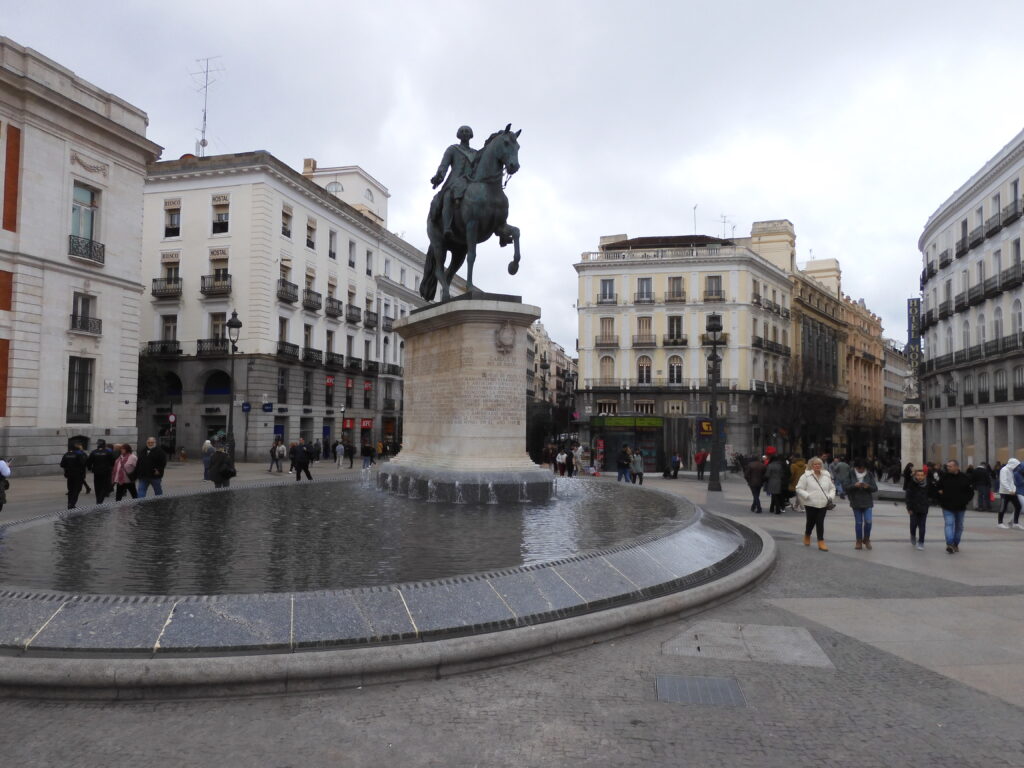

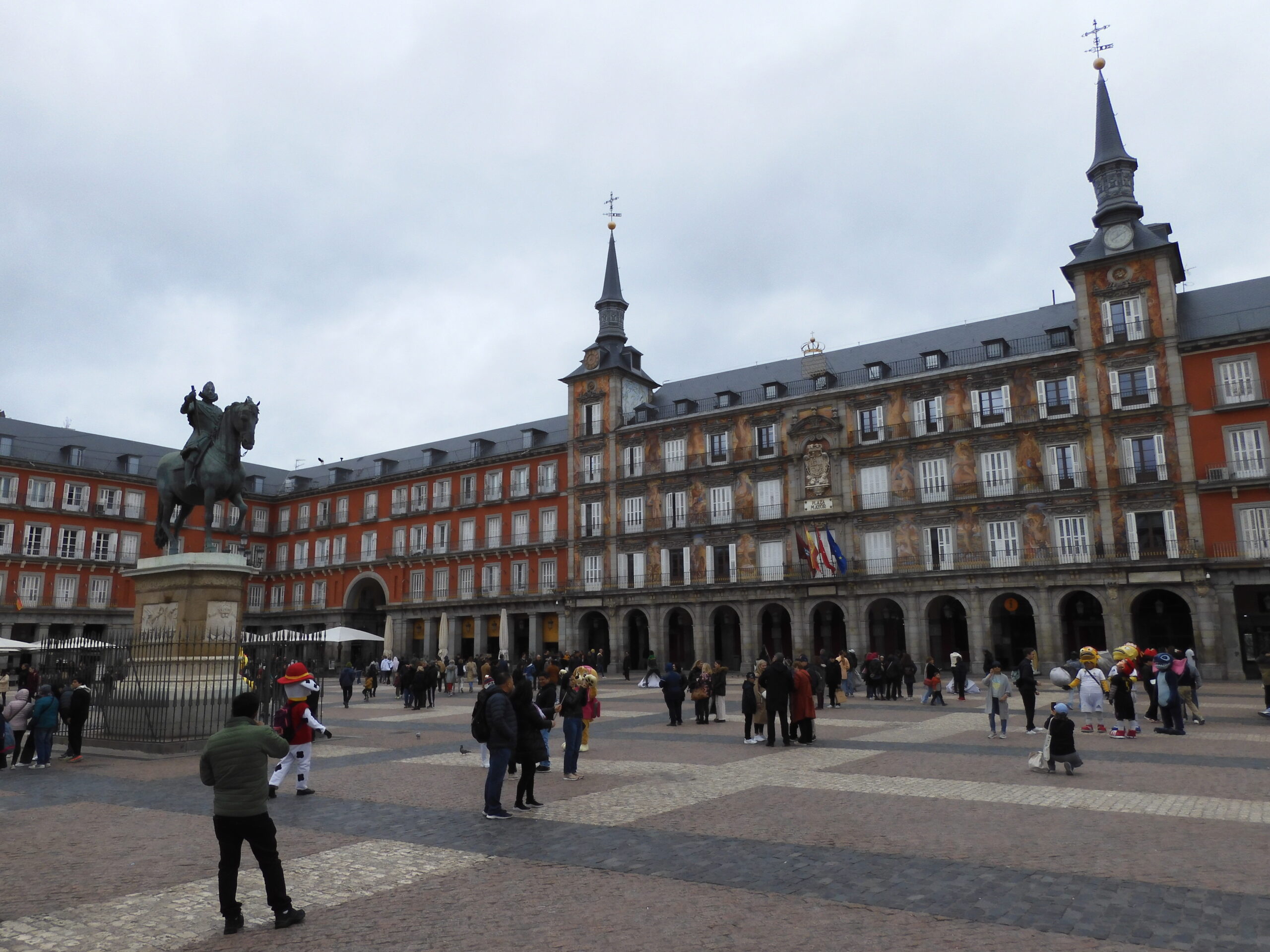

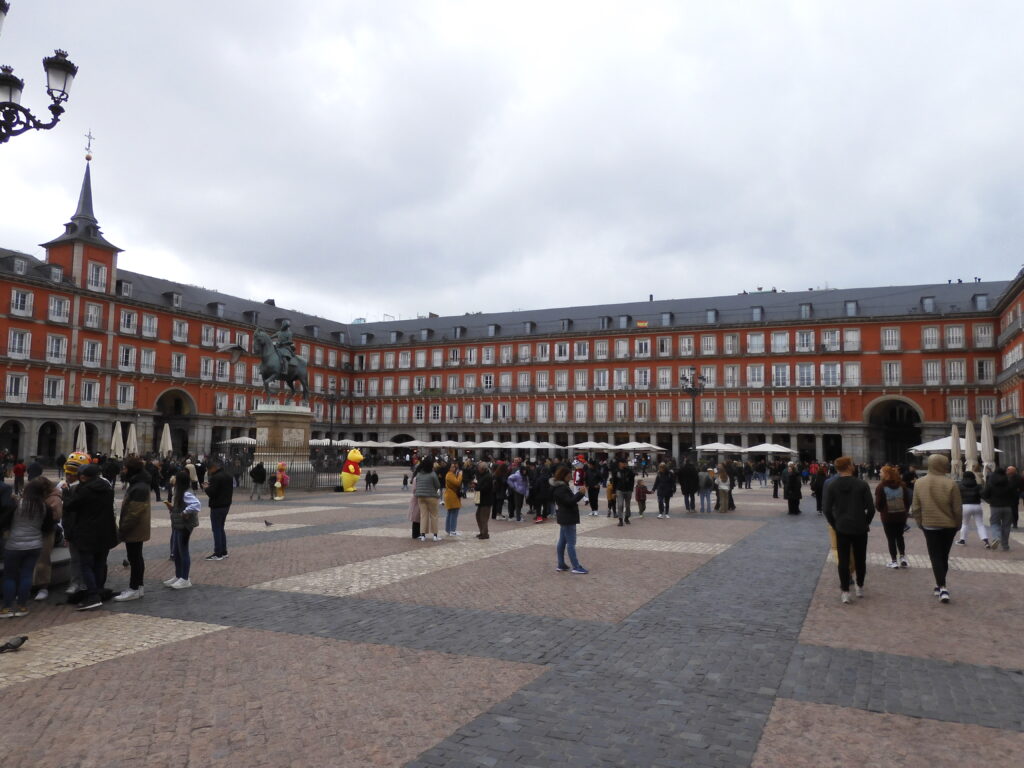
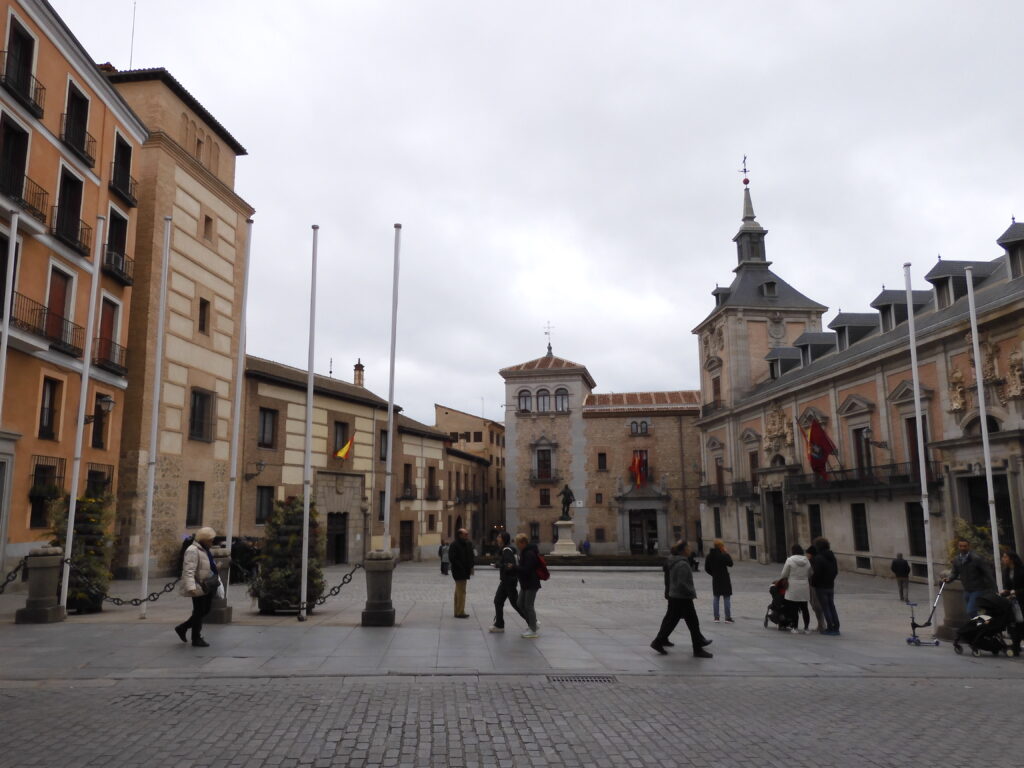

The first basilica I encountered was Almudena. This cathedral serves as headquarters for the Catholic Arch-diocese of Madrid. Construction began in 1883, but the building was not completed and put into service until 1992 when it was dedicated by John Paul, II. The building stands atop a crypt, and houses a sizable collection of art on loan from the Prado. It seems nearly every cathedral in Madrid has its own collection of religious art. Diego Velazquez must have been extremely prolific. The building was designed to look gothic, and it is beautiful if not old. Its additional claim to fame was a piece of 12th century furniture on display. Pre-modern furniture survived far less often than paintings, and this one was protected very well.
Basilica San Francisco had even more art. There was a medieval cathedral here built in the time of its namesake, Francis of Assisi. This was leveled on orders of Charles III, and the current building is a product of the late 18th century. The hours were fairly tricky, and the admission was high, but I got to stroll through it. The colored glass was attractive and I again enjoyed looking at Velazquez’s work and that of other Spanish painters. Basilica San Francisco has the fourth largest free standing dome of any religious structure in Europe. It is covered with beautiful 19th century paintings you can see in the pictures on this page.
(Continued)
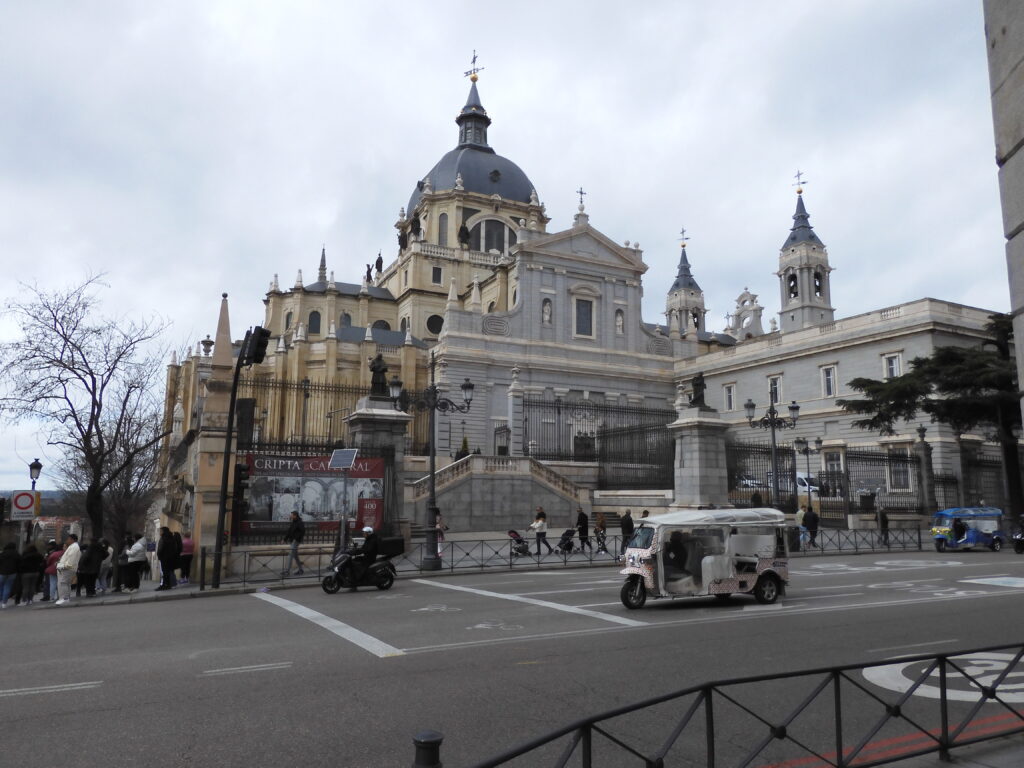
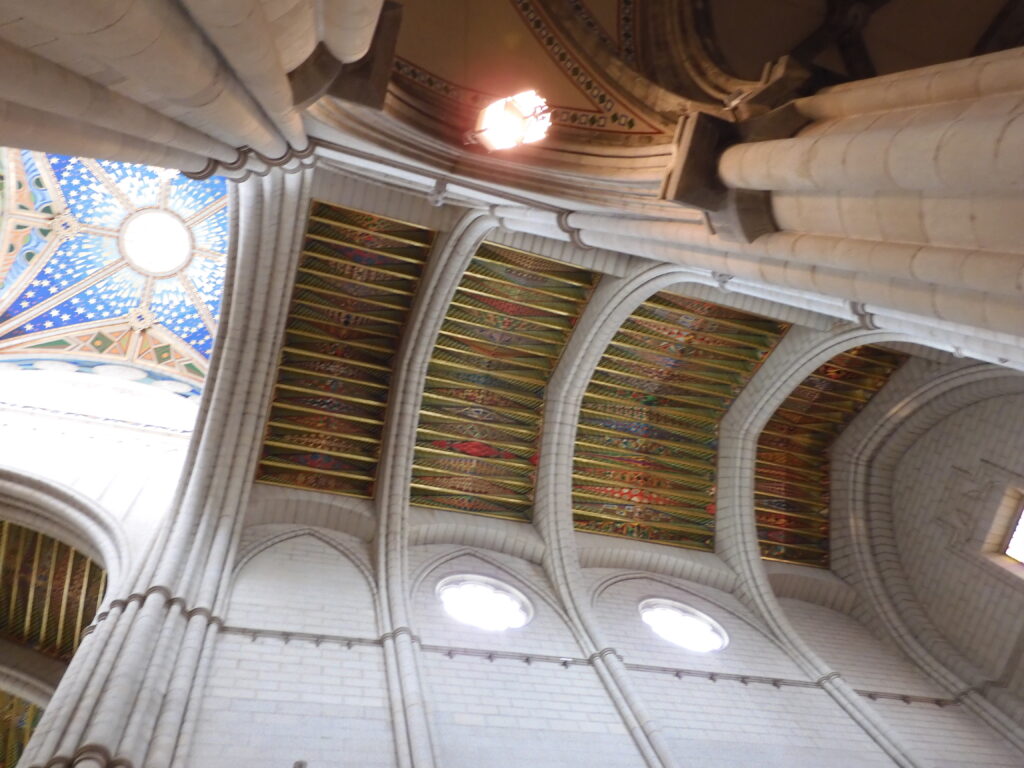
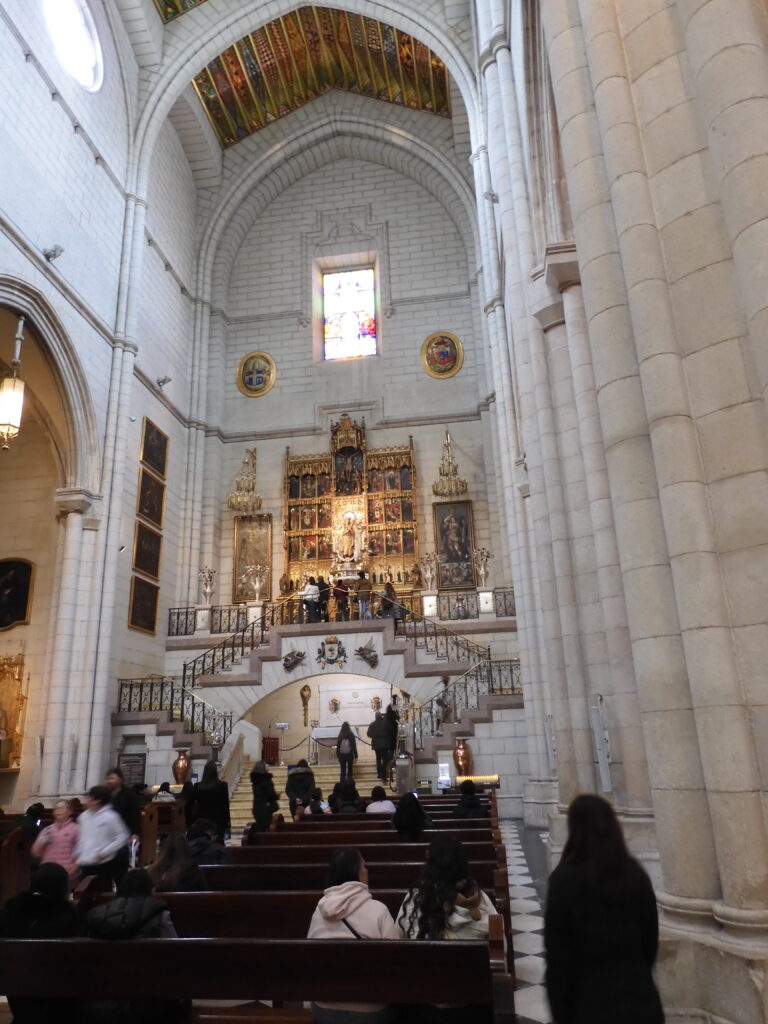
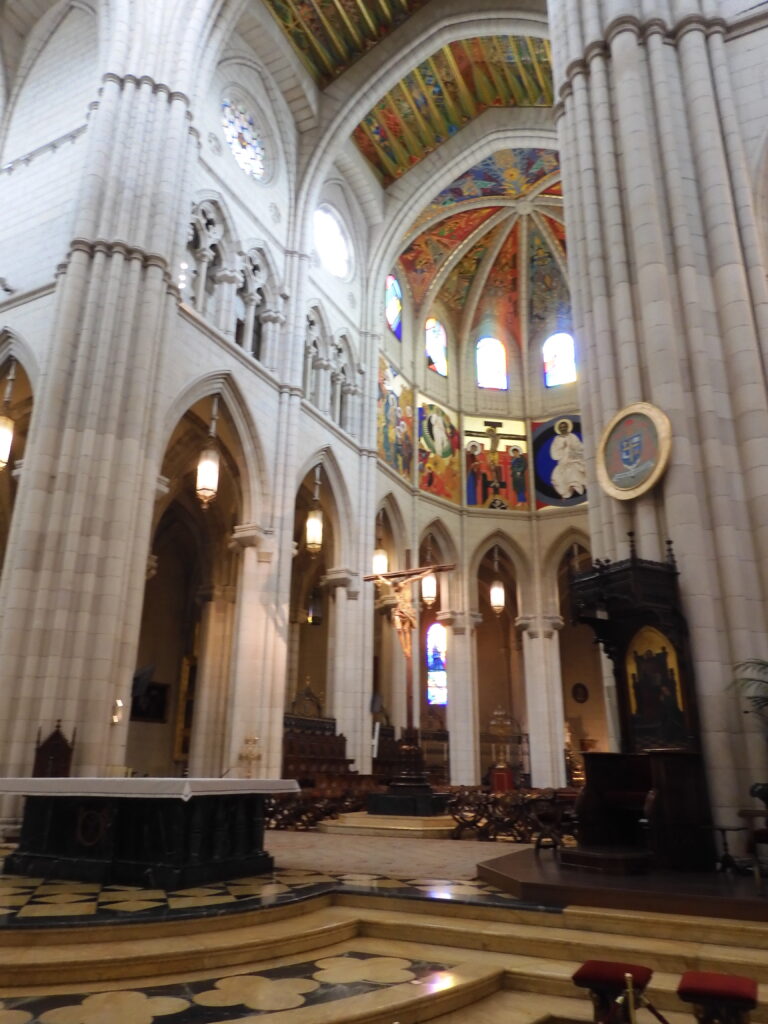
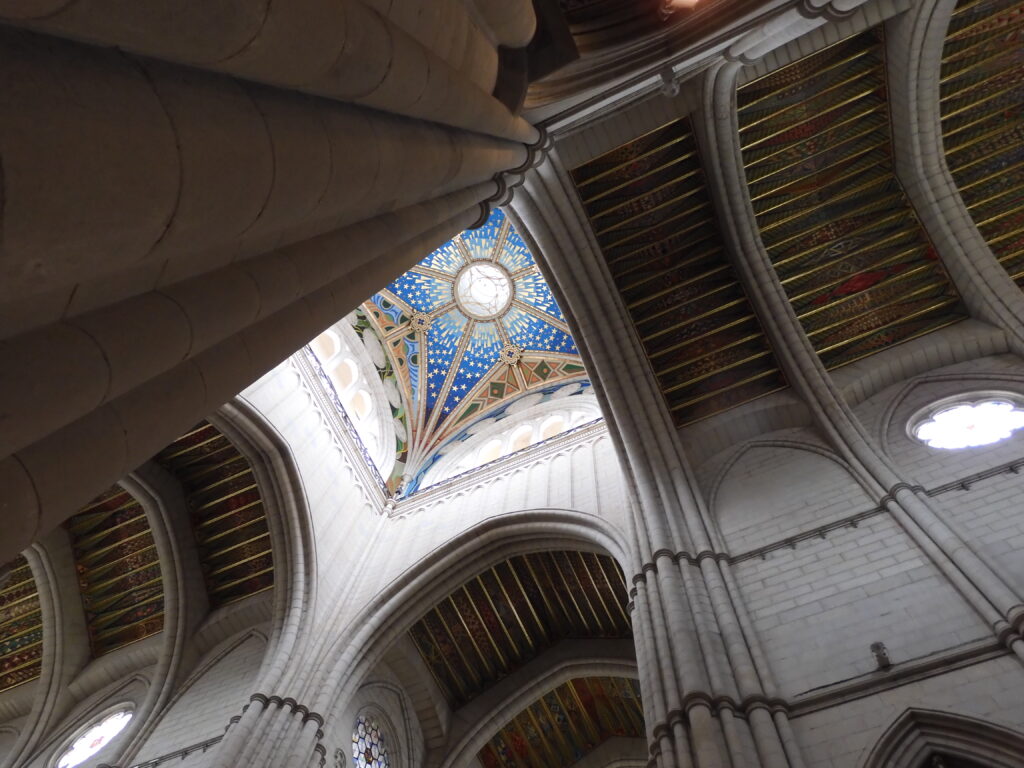
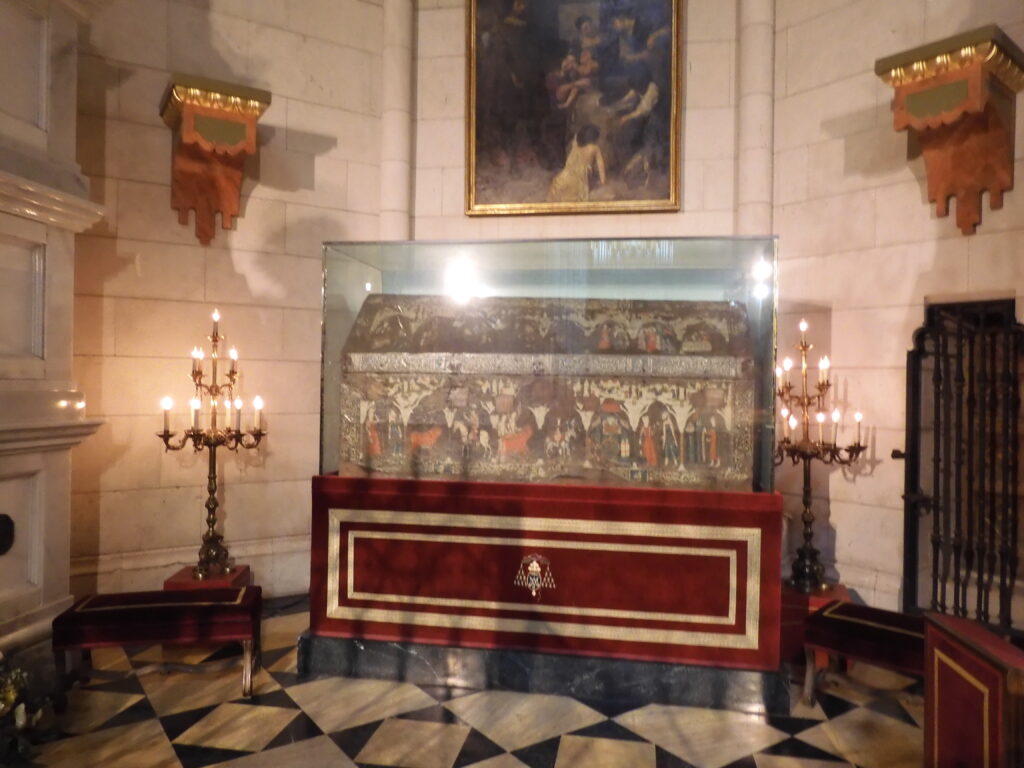
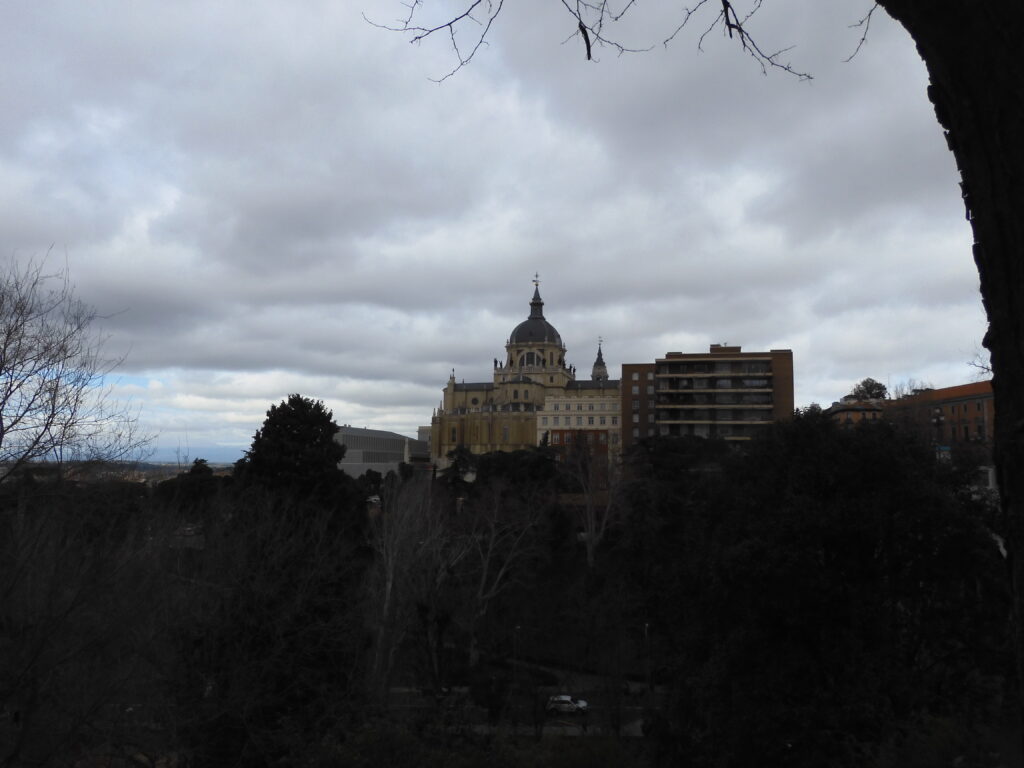
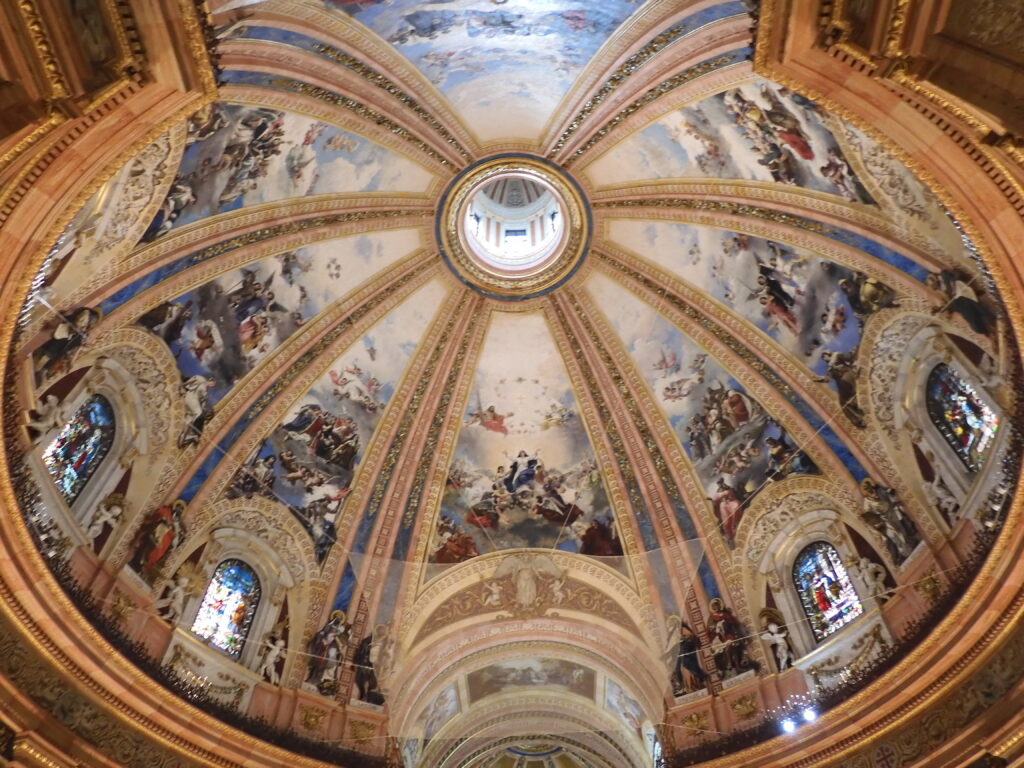
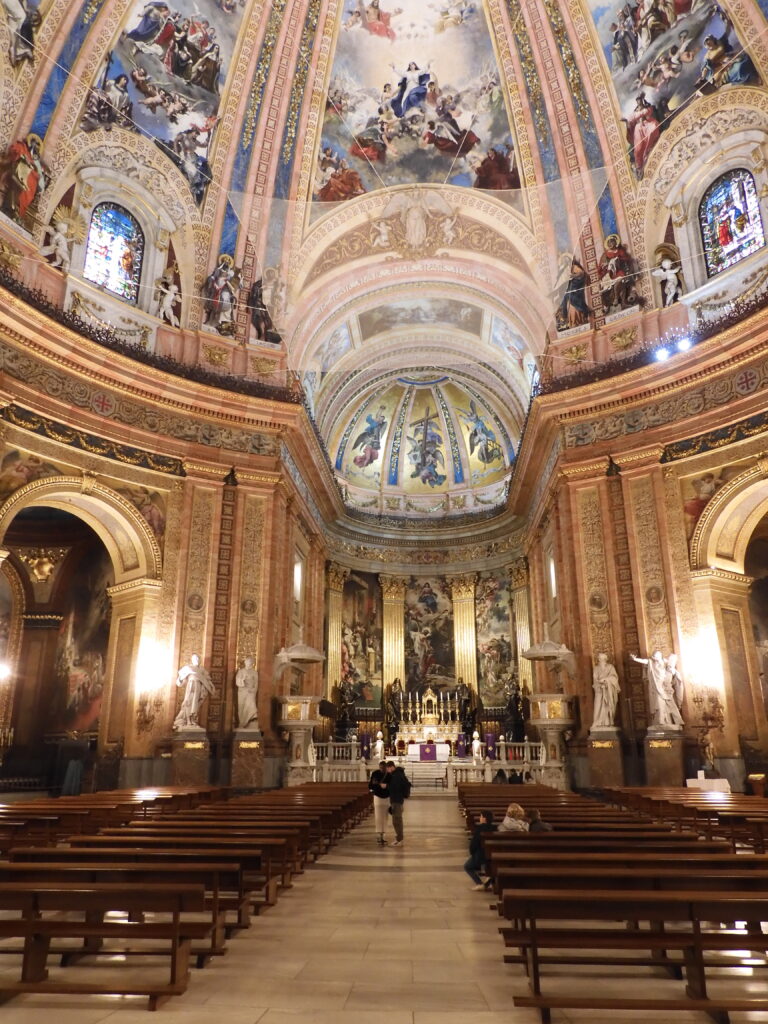
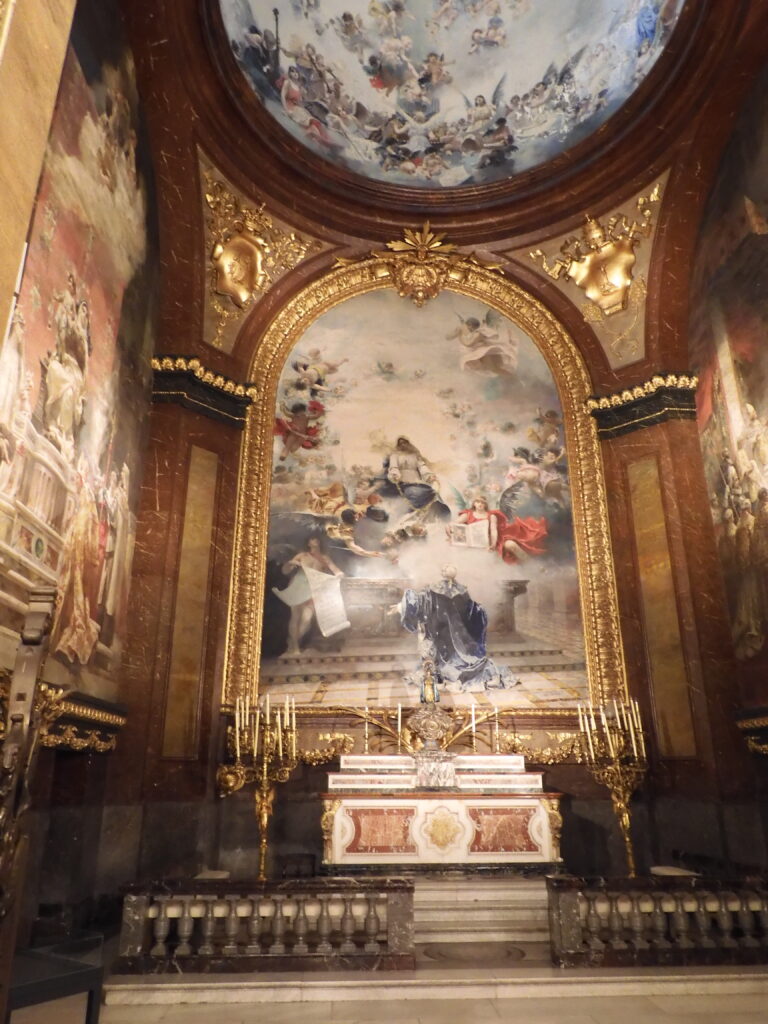
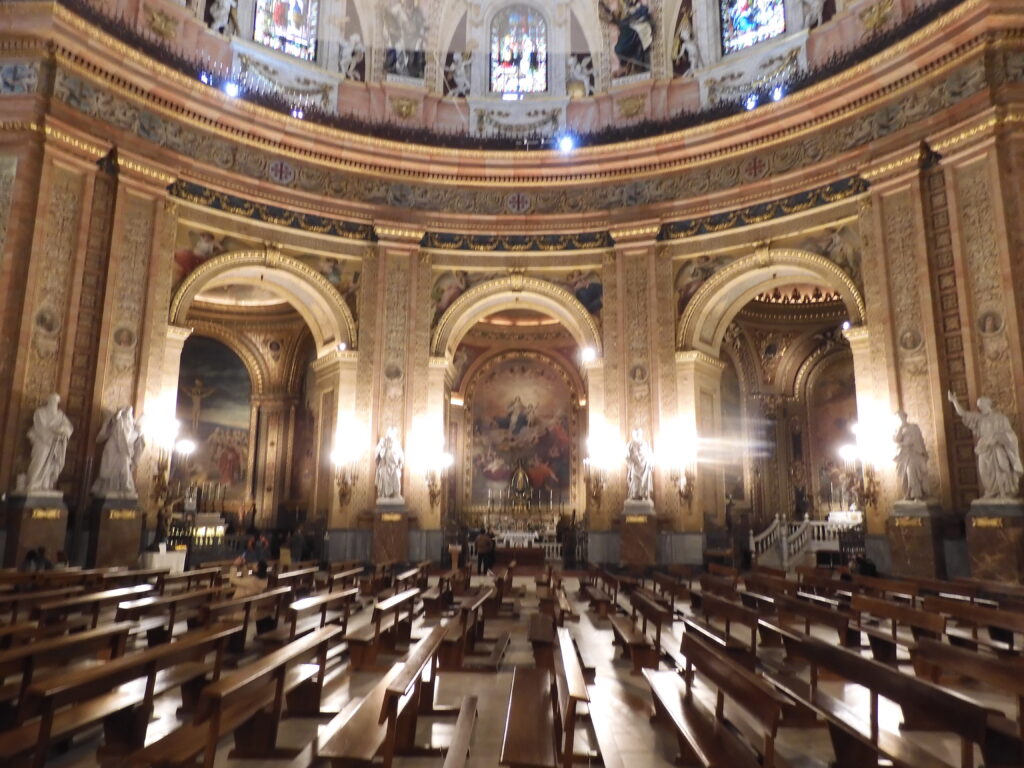
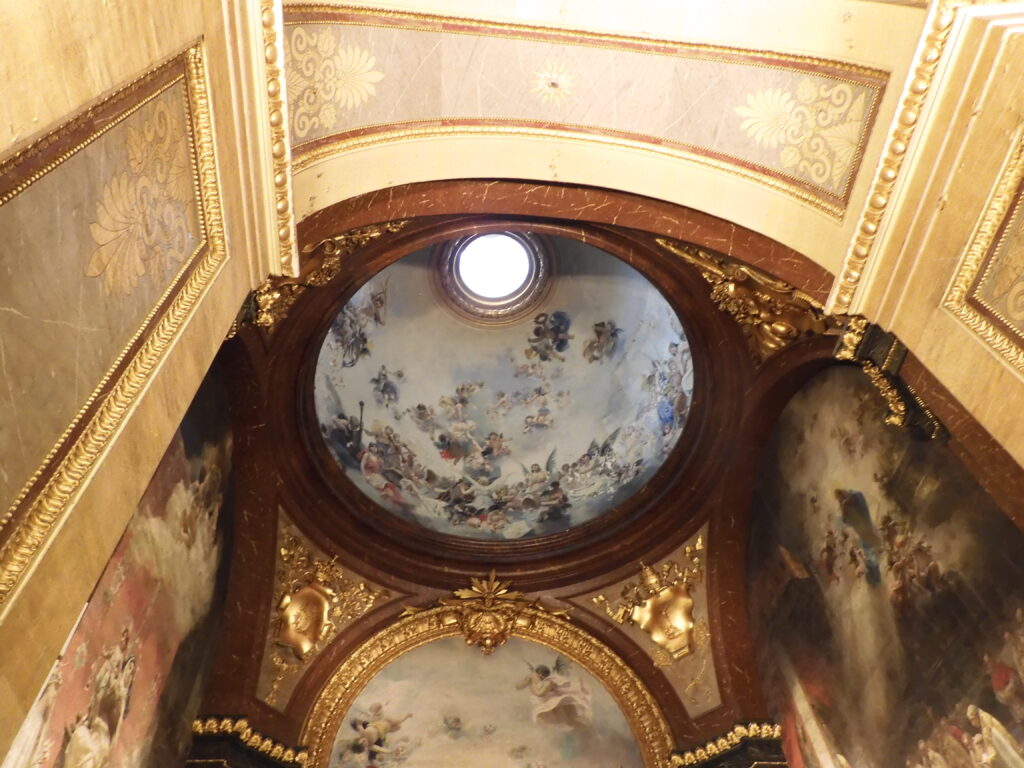

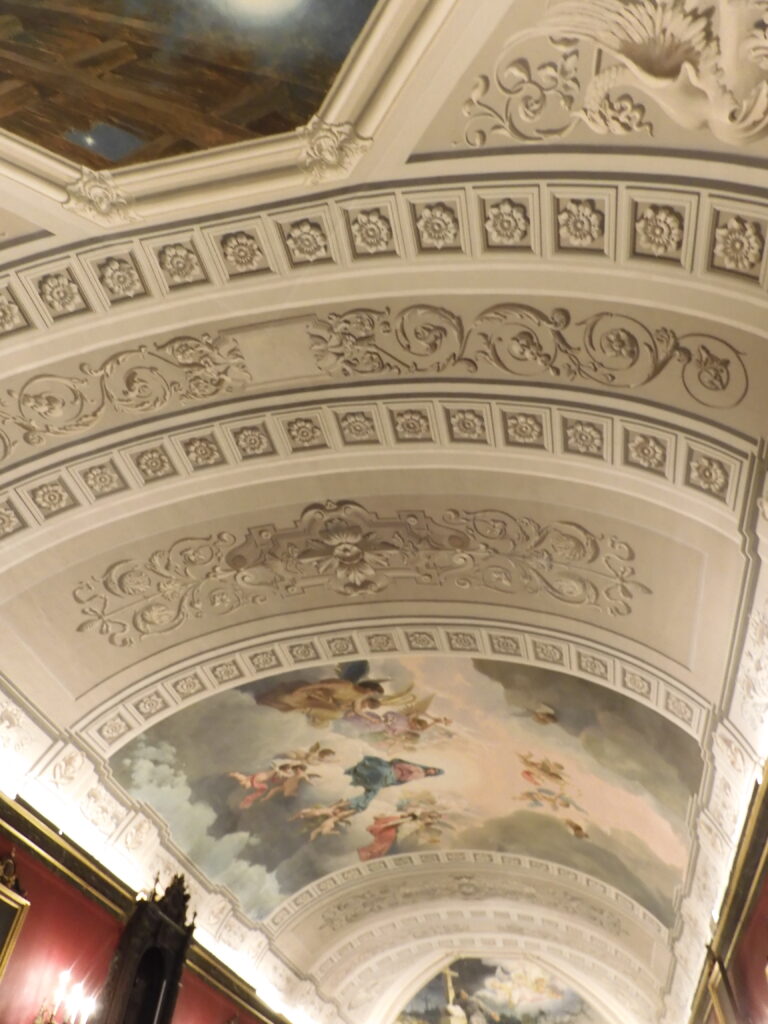
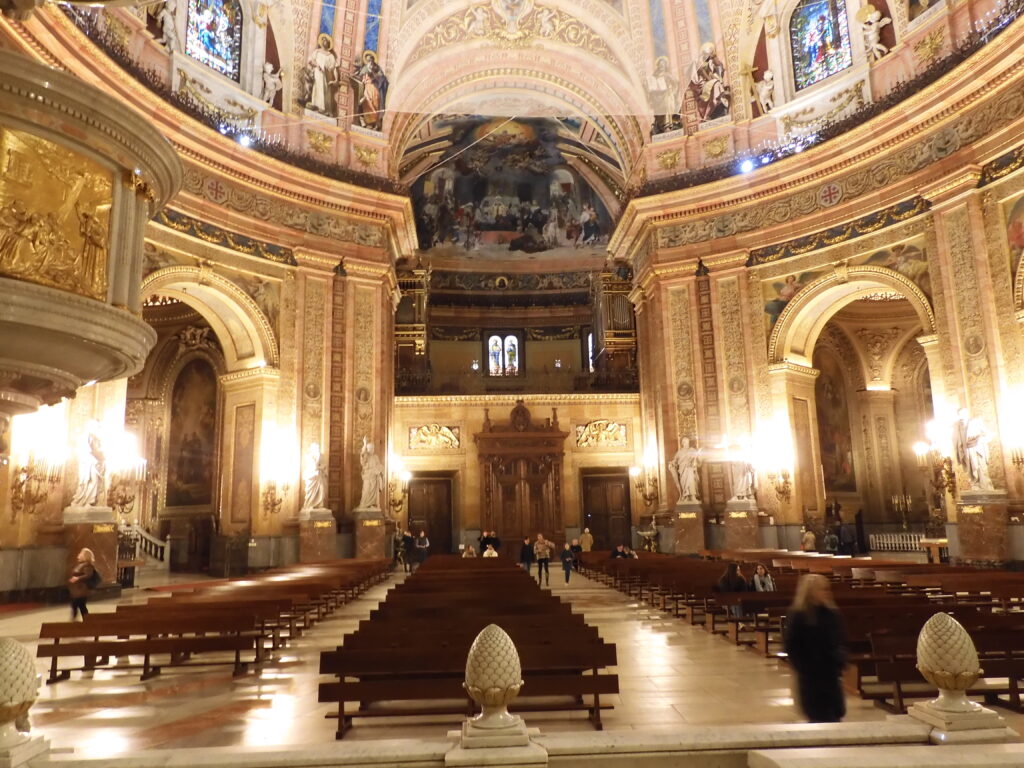
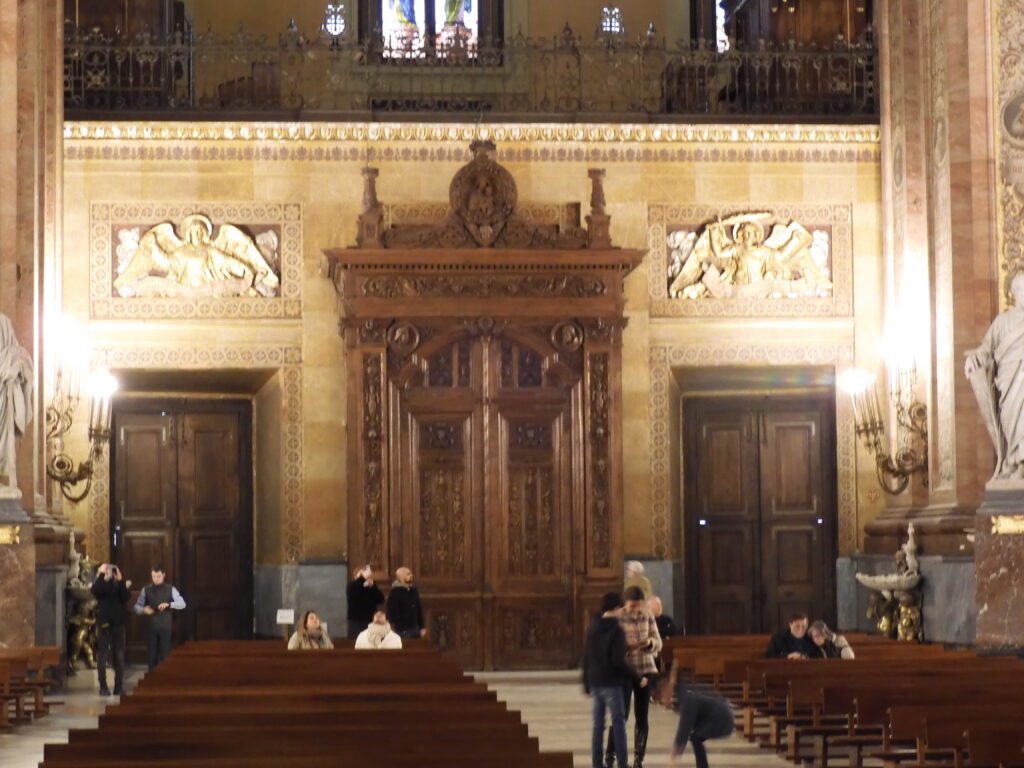
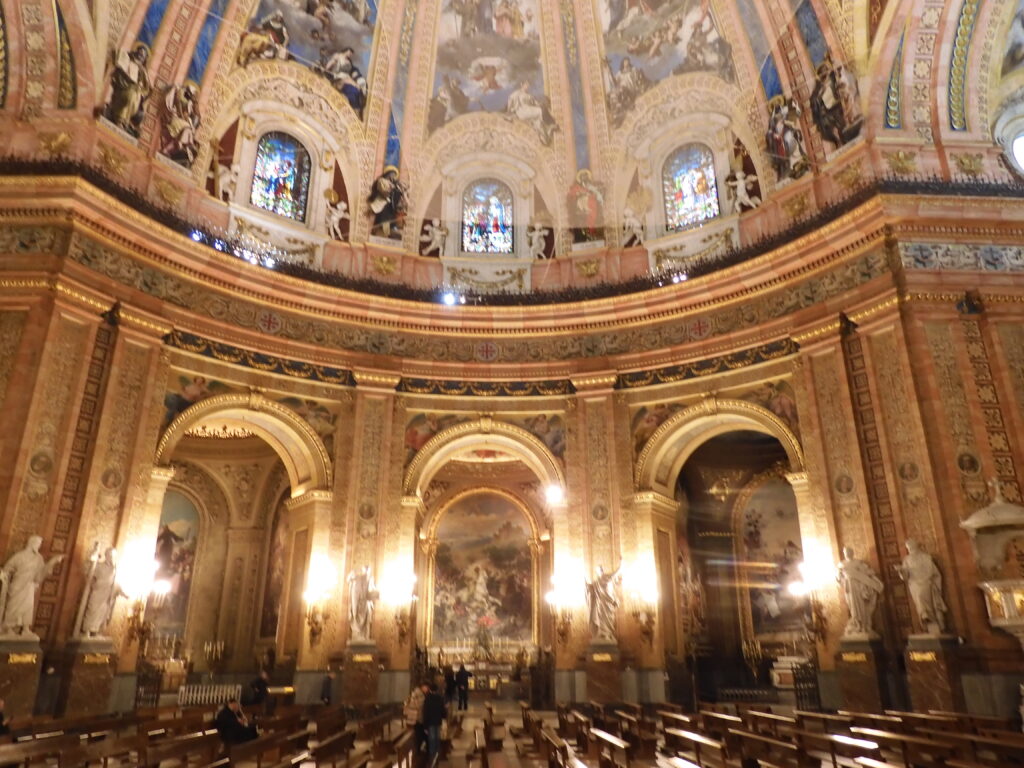

All of these sites were interesting, and I was excited to see them. I was also very tired. By the time I had walked all of these areas, I had covered quite a few miles and burned up the time until I could check in to my room. I walked back to the locker, collected my bags and then proceeded to the address of my room. I could not find anyone. The building had an outer entry door that I could not pass. My host did not respond to messages or WhatsApp calls. I waited. I waited over 45 minutes, standing in the street carrying everything I had brought on the trip. Just when I was about to give up and just find a motel room, my host responded that the previous guests had left quite a mess and that the room was not ready yet. The cleaning personnel needed a bit more time to work. I convinced her to let me drop bags in the room, so I could at least get around a little easier. She agreed to this, but I believe her cleaning helper did not completely understand the arrangement. He was just about done, anyway, but he left without putting sheets on the bed, etc. At that point, I was just glad to be able to crash for a few minutes before heading out again for dinner and to explore some more.
Close to nightfall, I wandered over to the Templo de Debod. This is an original 2nd century B.C. Egyptian temple. In 1968, as preparations were being made to build the Aswan Dam in Egypt, the temple was donated to Spain in gratitude for their assistance in preserving other ancient Nubian buildings. The entire temple was dismantled and reconstructed right near the Bourbon era Royal Palace of Madrid. There are a few artifacts inside the temple, but the main attraction is to come and look at the exterior of the temple itself. There are, of course, very few like this outside of Egypt, and this is the only one in Spain.
I enjoyed a couple of meals out, but I’ll save those descriptions for a special page on food in Spain. I spent some time each evening downloading and organizing pictures, and I was tired from walking 11-12 miles and getting less than a full night’s sleep on the plane. I was in relatively early, which I realize is not Spanish style.
